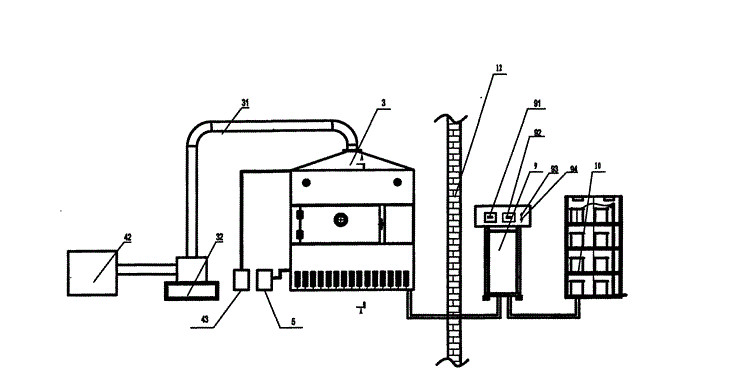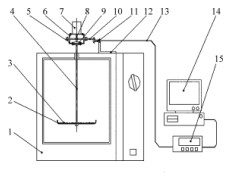Prospects for microwave drying of agricultural products

Fast and economical drying of agricultural materials and maintaining their good quality has always been an important subject for us to study. Generally, the drying method of agricultural products is time-consuming and slow, and the negative temperature gradient is formed from the surface to the inside, which is not conducive to water evaporation. At the same time, the first drying of the surface layer of conventional drying will hinder the diffusion of internal water. Moreover, hot air drying consumes a large amount of gas or fuel, which not only pollutes the environment, but also has a negative impact on the nutritional value of agricultural products. The microwave drying equipment is different from hot air and other drying methods. The grain directly warms up after absorbing microwave to form a smaller positive temperature gradient, which is conducive to the diffusion of internal moisture and greatly accelerates drying speed. It is a new technology worthy of in-depth study.
Professor M ujumdar, chairman of IDS, pointed out that since 1990, the price of dry energy has remained important, but it is no longer the most critical factor for drying research. It is now driven by the demand for new products and processes. At the same time, it is pointed out that hot air drying is not an environmentally friendly operation nowadays. Carbon dioxide produced by fossil fuel combustion is the main component of the so-called "green room effect".
Based on these considerations, the general objective of current drying is "to remove liquids (usually water) at the fastest speed and to minimize adverse effects on the product; not to damage the environment and to invest the lowest funds and operating costs". Therefore, the practical engineering strategy in this field is to explore and consider the drying process of various scales from millions (from economic and environmental considerations) to micro (material properties). It also points out whether convection, conduction and microwave drying can be combined. Therefore, the drying of agricultural materials should also be studied as a goal.
Microwave drying originated in 40s and was widely used in foreign countries only in 60s. Because of the unique advantages of microwave drying, it has developed rapidly. Foreign countries have been applied in light industry, food industry, chemical industry, agriculture and agricultural products processing. Because of the selective heating of water by microwave, water-bearing substances such as grain, oil crops, tea, silkworm cocoon, wood, paper and tobacco can be dried by microwave.
Since 70s, the application of microwave drying abroad has continued to expand. The application of microwave drying technology in China began in the early 1970s, and has been applied in light industry, chemical industry and agricultural products processing, which is a promising technology. At the same time, after more than 20 years of development, China has been fully able to localize microwave heating equipment, the life and quality of magnetron has been greatly improved, the production technology of the whole machine has passed the customs, and can be exported to foreign countries. Relatively speaking, the research of microwave drying is lagging behind. Therefore, there is still a lot of work to be done in this area, only to add more. The pace of research and development can make the application of microwave energy achieve greater economic and social benefits.
At present, many agricultural products, such as tea, cereals, vegetables, fruits, soybeans and so on, have successfully applied microwave drying, and achieved remarkable economic benefits. If microwave drying is used to dry vegetables with moisture content less than 20, the efficiency can be more than 10 times higher than that of traditional methods. By observing the microwave-dried vegetables under the microscope, it can be found that the tissue of the microwave-dried vegetables is next to that of the freeze-dried products, but the drying time is shorter than that of the freeze-dried products. The drying time of tomatoes, grapes, potatoes and wheat dried by microwave and hot air is 1/4 and 1/3 of that dried by hot air, respectively. 1/6 and 1/10, and improve the quality of the product. First, the onion was treated with hot air to reduce its moisture content to 10, and then dried by microwave to 5.
The whole process is 30% more energy-saving than hot air drying; microwave vacuum drying of cereal seeds can improve the germination rate of seeds because of its lower treatment temperature; at the same time, the research on microwave drying mechanism of agricultural products is more active, such as corn, rice, wheat, rapeseed and soybean. This will certainly promote the development of microwave drying of agricultural products.
3 concluding remarks
It can be predicted that microwave drying of agricultural products will be regarded as a high-tech, with its unique heating characteristics and drying mechanism as a new way to avoid drying of agricultural products, and its application prospect is very broad. Microwave technology will continue to develop in a broader and deeper direction, while improving its own technology and equipment. The emerging microwave vacuum drying technology, microwave freeze-drying technology and microwave expansion technology will continue to develop in the establishment, perfection and application of theory.